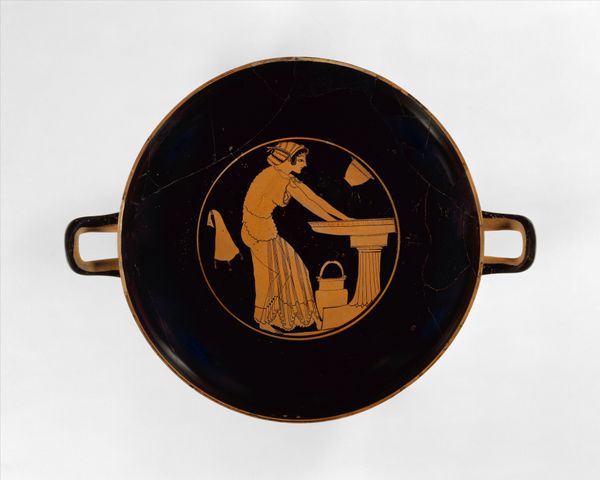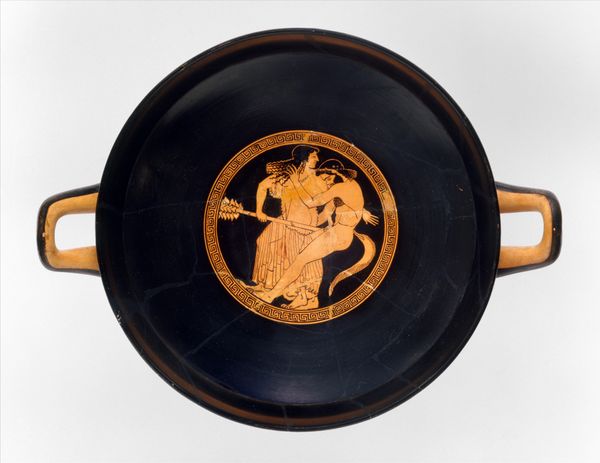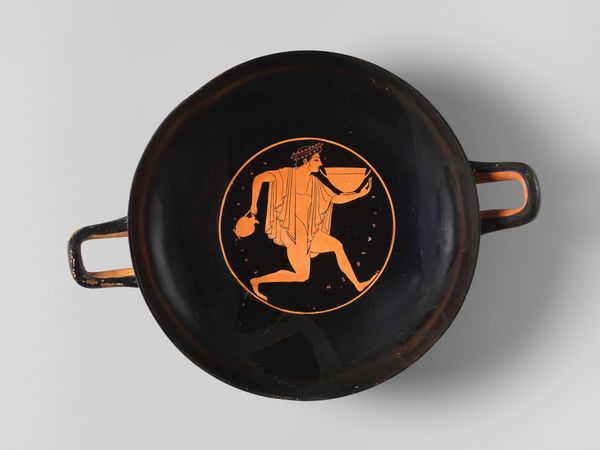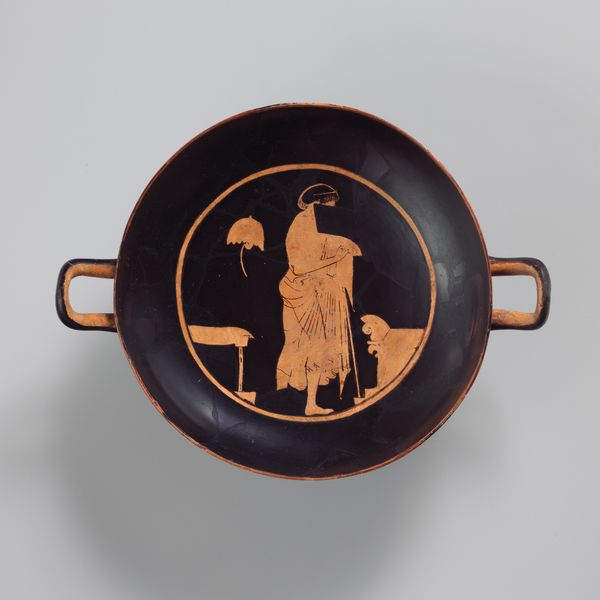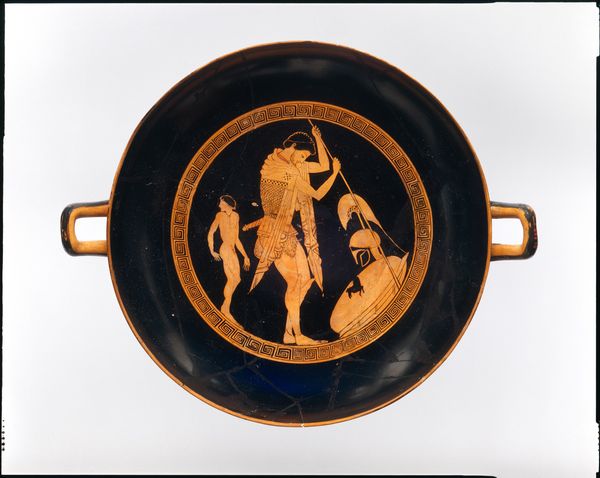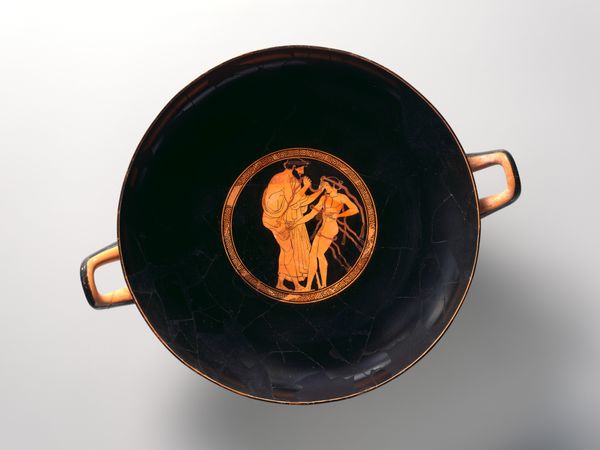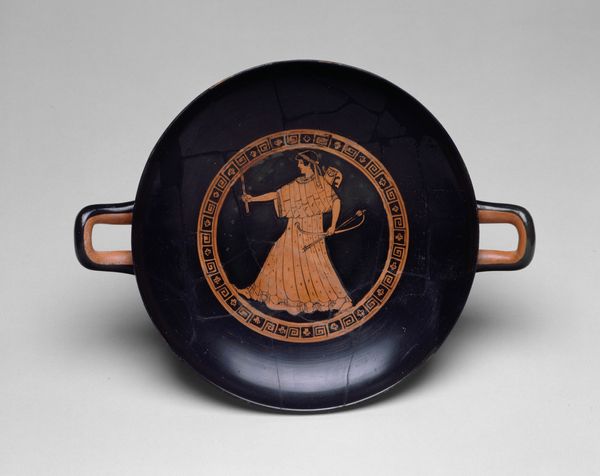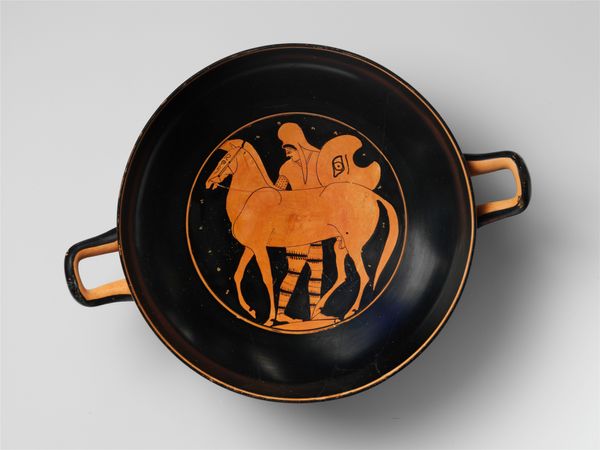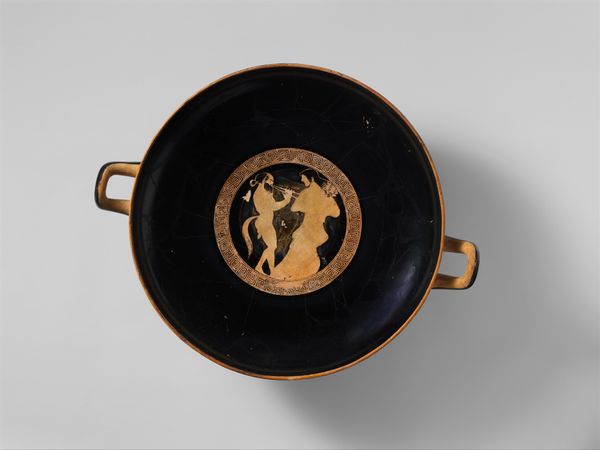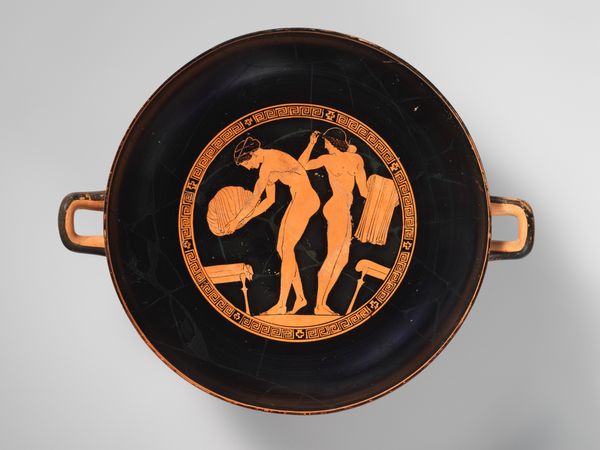
drawing, ceramic
#
portrait
#
drawing
#
pottery
#
greek-and-roman-art
#
ceramic
#
vase
#
figuration
#
roman-art
#
stoneware
#
ancient-mediterranean
#
genre-painting
Dimensions: H. 3 7/16 in. (8.8 cm) diameter 7 11/16 in. (19.5 cm)
Copyright: Public Domain
Curator: This drinking cup, a terracotta kylix, dates all the way back to 499 BC. It's currently housed at the Metropolitan Museum of Art, and the artist responsible is believed to be Makron. Editor: Wow, almost two and a half millennia old... It looks surprisingly delicate for something that's been around for so long. The black and red figures pop against that circular backdrop. Very elegant, even in its simplicity. Curator: Simplicity belies sophistication, don’t you think? Imagine the process: forming the clay, applying the slip, then that intricate firing technique to get the black gloss! This wasn't just made to be pretty. Think of the skilled labour involved. This cup likely represents communal activity: perhaps a symposium gathering? Editor: That’s interesting because it gives a peek into everyday life back then – people drinking together, creating shared experience. Do we know what kind of scenes the artist depicted? Curator: Well, Makron favored narratives often lifted straight from daily routines or popular myths of the era. We see two figures engaged in some sort of discussion. The fellow is almost completely nude except for the cloth draped over his shoulders and arms. The second is slightly more covered; she also has an object in her right hand; a papyrus or small blade perhaps. Editor: So, this vessel wasn’t destined to become a static object frozen in time. This terracotta experienced a life that touched many lips, becoming the very center of conversation as it moved between hands— the vessel of memory-making. Does that resonate with you in terms of its creation or purpose? Curator: Absolutely. I see it as more than mere decoration. Its purpose and construction demonstrate that objects contain not just aesthetic beauty but historical information encoded within its materiality and social contexts as well, speaking to community in the ancient world.. It evokes shared moments, echoes of laughter, even whispered secrets under dim light… which makes you consider where its broken and missing parts are? I find I’m inventing their trajectory too. Editor: I'm compelled by the journey of raw materials transformed by human intention, labor, and artistry, eventually into a culturally valued product and an invaluable artifact now housed in a museum. It's about production as much as it's about pure artistic vision, the intersection between daily ritual and craft. Curator: Indeed. A vessel carrying both drink and stories, bridging past and present.
Comments
No comments
Be the first to comment and join the conversation on the ultimate creative platform.
